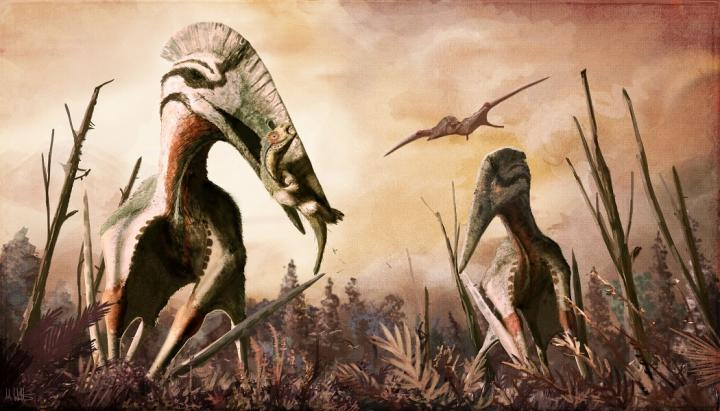
Once upon a time, even huge dinosaurs were prey for these flying giants, who had wings of at least 20 ft long, reveal fossil findings in the UK, reversing the popular notion that they were invincible creatures on the earth.
The pterosaur fossil found embedded in the cliffs on the Isle of Wight, known as Hatzegopteryx. This giant prehistoric creature used to live on earth about 125 million years ago and currently the researchers believe that it could be one of the biggest species ever to fly.
The massive flying hunters weighed up to 650lbs and had enormous elongated jaws to catch and kill prey and used to hunt dinosaur babies millions of years ago, reported The Sunday Times.
It should be mentioned that it was almost 66 million years ago that the dinosaurs, as well as pterosaurs, vanished from earth.
The huge size of these ancient creatures, which are separated from dinosaurs, has long baffled scientists because they thought that those wings would be extremely heavy to take off. But, thanks to the technology, a computerised 3D model suggested that these creatures "used their large leg and wing muscles as catapults" to propel themselves into the air.
Robert Coram, a professional fossil hunter and the man behind this recent finding, said "It might have been the largest flying creature that had ever lived up to that time," and speculated that "this is one of the first superpterosaurs."
"The Isle of Wight is incredibly heavily prospected by people almost on a daily basis, so it's a matter of being able to spot the little things that they can't," the researcher added.
Scientists mentioned that pterosaurs, were the first backboned animals to evolve the ability to fly and the Isle of Wight pterosaur is claimed to have been one of the earliest species that reach to such gigantic size.
As per Michael Habib, a pterosaur expert at the University of Southern California, even though these creatures can be compared with bird's characteristics, pterosaurs walked on all fours on earth.
In addition, Habib said that the 3D modelling indicates that launching from a quadrupedal stance by pushing off first with the hind limbs and then with the forelimbs, "would have provided the leaping power giant pterosaurs required for takeoff."









